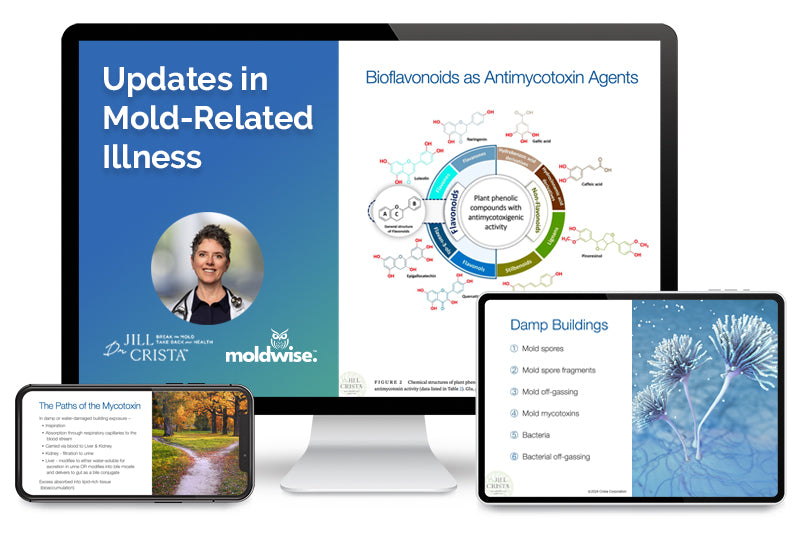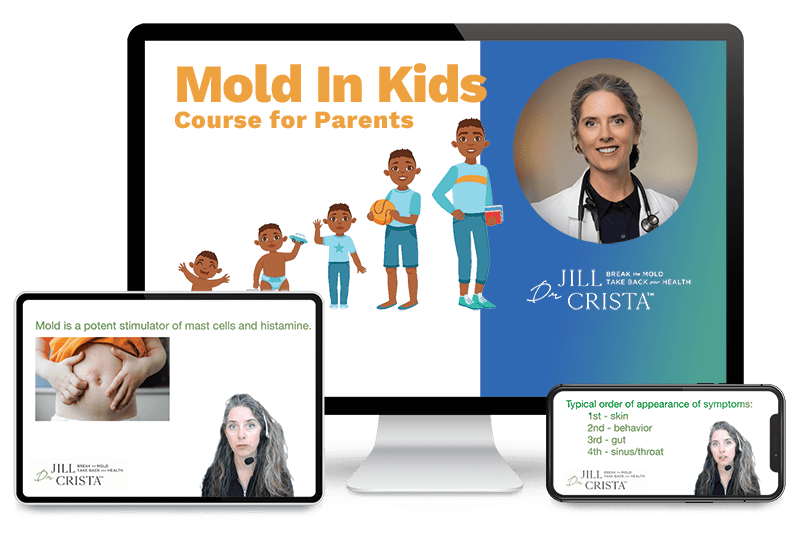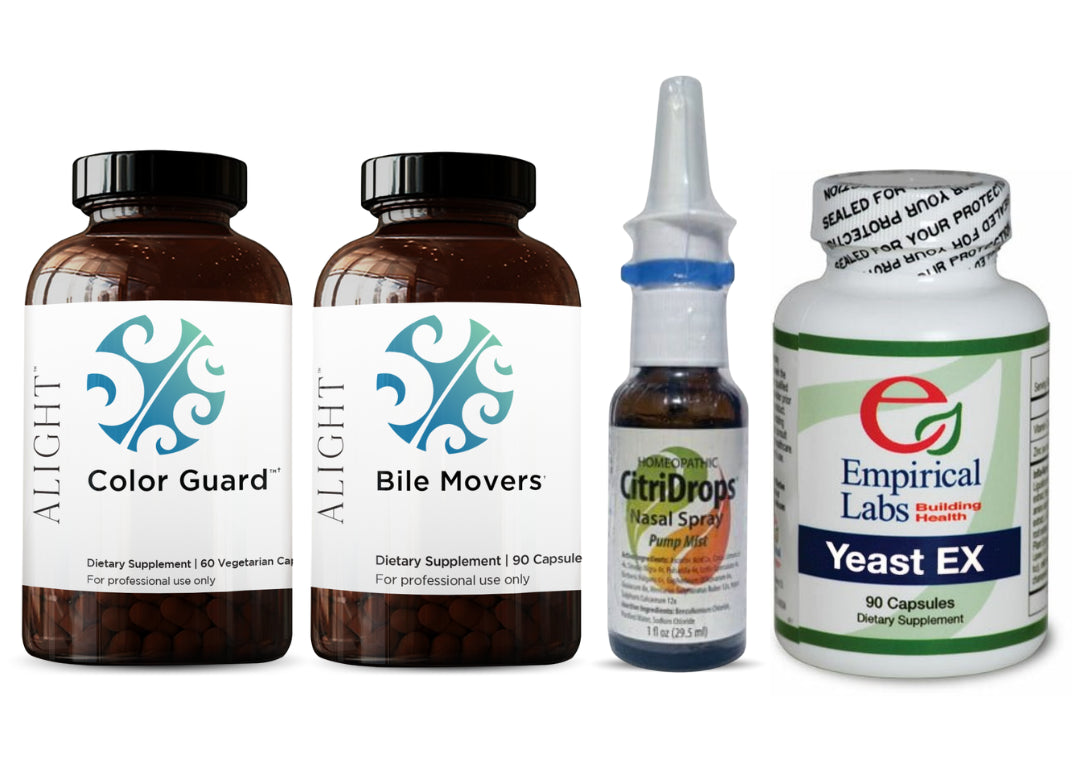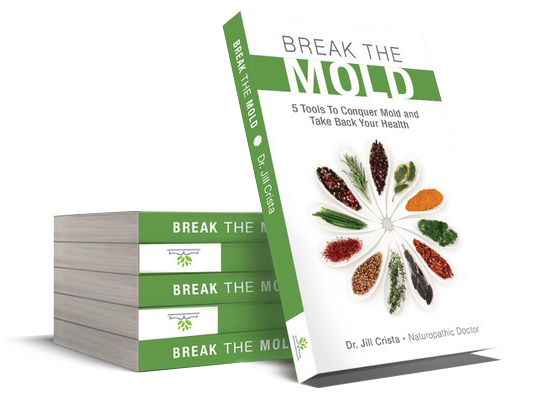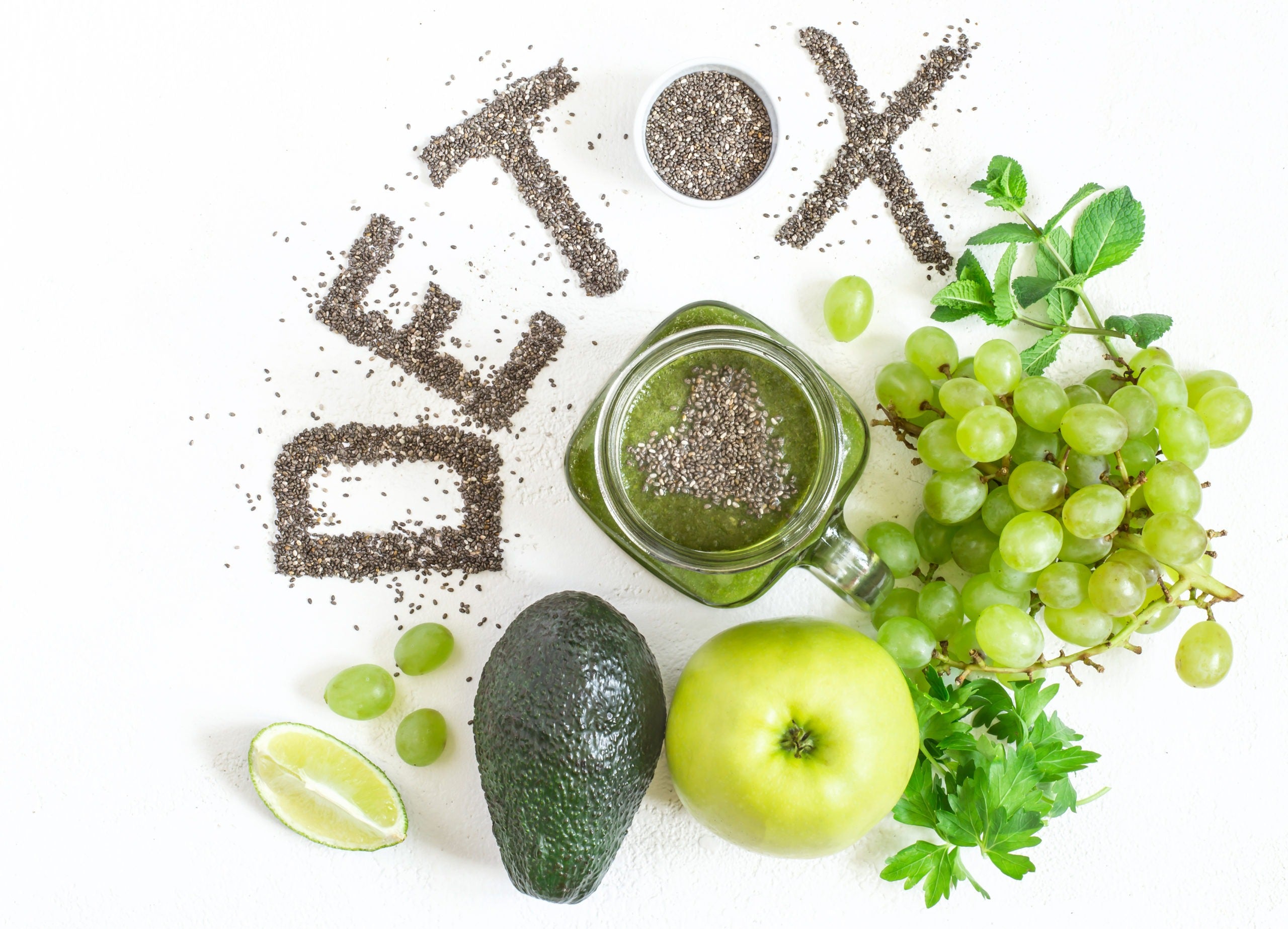If you’re worried about myocarditis and wondering if mold could be a culprit, you’re in the right place! I’m Dr. Jill Crista, author of Break the Mold, and I’m here to explain with a little love and the right tools, how you can support your heart’s recovery.
Mold exposure can inflame your heart muscle, but you can do something about it. Ready to worry less and take back your health? Let’s dive in!
How Mold Triggers Myocarditis
When you think of mold, do you think of heart symptoms? Probably not! Yet this is one more place that sneaky mold can go. Even the Mayo Clinic has made this connection. Here’s how mold plays a role in this heart condition:
- Inflammation Overload: Mold is really inflammatory, causing systemic inflammation that can target the heart muscle.
- Mitochondrial Damage: Mold depletes mitochondrial function, and our hearts are loaded with mitochondria.
- Energy Starvation: The heart, which can’t take even a minute off, struggles when mold toxins impair its energy production, causing myocarditis.
Recognizing Myocarditis Symptoms
Myocarditis means inflammation of the heart muscle, and the symptoms can be quite unsettling. Watch for:
- Chest pain
- Shortness of breath
- Dizziness
- Exercise intolerance
- Fatigue
- Swelling in the extremities
If this is happening, go get checked out by your doctor—stat!. Rule out other causes with medical tests. If mold is involved, targeted support can help.
5 Steps to Support Heart Health
My go-to strategies for mold-related myocarditis, starting with the breath. Here are 5 steps to try:
- Breathe Deeply: Learning some kind of breathing technique has been pivotal for my patients with myocarditis. Mold exposure leads to under-breathing; deep breaths deliver oxygen to the heart. Practice diaphragmatic breathing or a technique that resonates with you to expand and oxygenate.
- Moderate Activity: You absolutely should be active. Movement boosts oxygen flow, but overexertion taxes a healing heart. Listen to your body—walk, stretch, or do gentle yoga, scaling back if symptoms flare.
- CoQ10 (Ubiquinol): Mold massively depletes this important fuel for our heart muscle mitochondria, causing an “ache” for energy. Use high-dose, absorbable ubiquinol (not ubiquinone). If no relief, increase the dose or switch brands. I prefer Alight Health Formulas’ CoQ Absorb.
- Hawthorn: Hawthorn has an affinity for the heart. It feeds the heart’s own blood vessels, boosting contraction and reducing vessel inflammation. Try hawthorn solid extract or tea.
- Phospholipids & Enzymes: Phospholipids (phosphatidylcholine, phosphatidylserine) repair stiff cell membranes, aiding nutrient absorption like CoQ10. Enzymes reduce inflammation and bust biofilms.Use liquid liposomal phospholipids and enzymes like lumbrokinase, taken away from food.
Why Love and Time Are Key
Myocarditis can take a while to fully heal after mold. Give it time, love, a little laughter, and a nice deep breath. Here’s why:
- Patience Heals: Heart inflammation resolves slowly; consistent support speeds recovery without stress.
- Love Nurtures: Send some love to your heart! Positive emotions reduce tension and support healing.
- Laughter Helps: A lighthearted mindset eases the nervous system, which mold often disrupts.
Tips for Personalizing Your Recovery
My approach is tailored, so here’s how to make these steps work for you:
- See a Doctor: Get tested to confirm myocarditis and rule out other causes
- Start Slow: Try 1–2 steps (e.g., CoQ10, breathing) and monitor for 2 weeks. Add more if needed.
- Use Quality Supplements: Choose ubiquinol CoQ10 and liposomal phospholipids for better absorption.
- Consult a Pro: Work with a mold-literate practitioner, like those listed at NAEM and ISEAI.
- Avoid Mold: Keep your home mold-free to reduce heart stress.
You’re Ready to Heal Your Heart!
Mold-related myocarditis is serious, but with CoQ10, hawthorn, and mindful breathing, you can support your heart’s recovery. Don’t forget this heart-loving tip. Send some love to your heart, and go thrive! Save this guide and share it with someone facing heart symptoms.
Join my newsletter for more mold recovery tips.
Disclaimer This content is health information and not intended as personal medical advice. Viewing will not establish a doctor-patient relationship. It is not intended to diagnose, treat, cure, or prevent any disease or medical condition. The information discussed is not intended to replace the advice of your healthcare provider. Reliance on information provided by Dr. Jill Crista, employees, or others appearing at the invitation of Dr. Crista is solely at your own risk.

